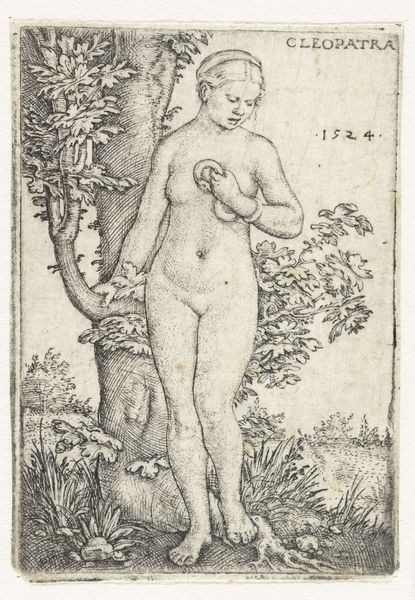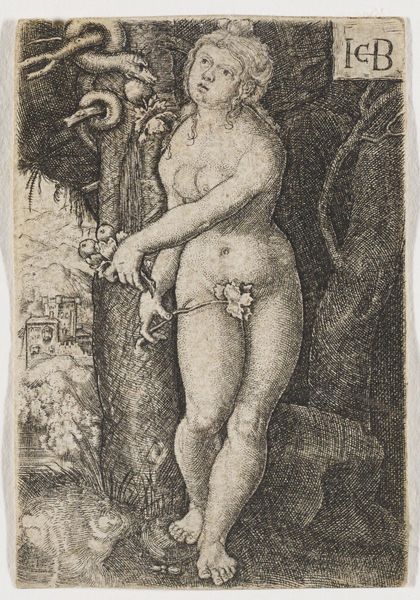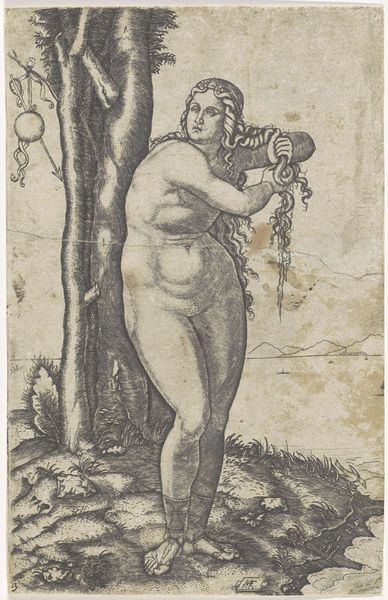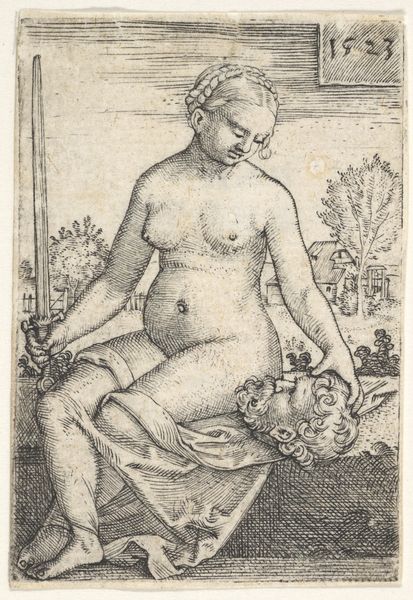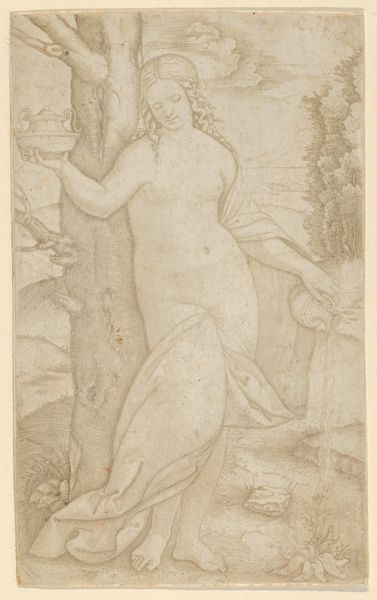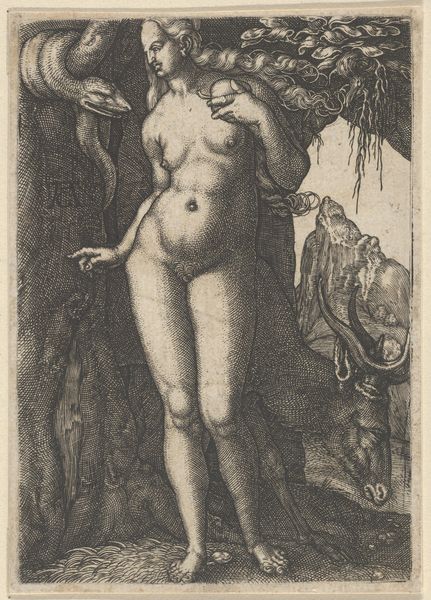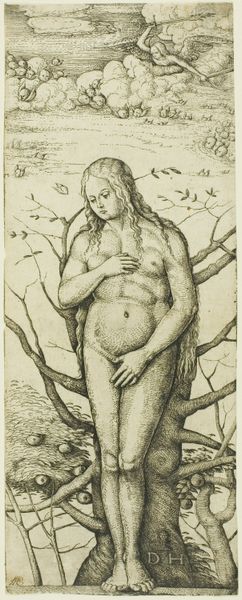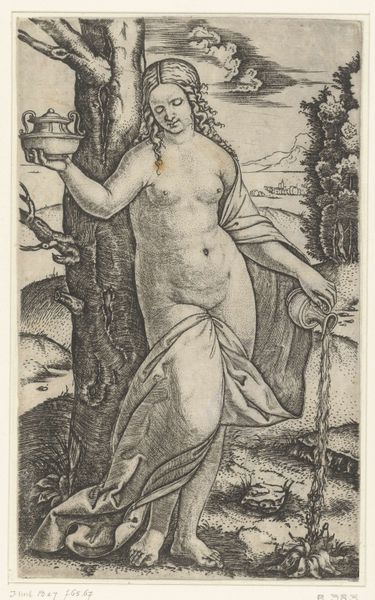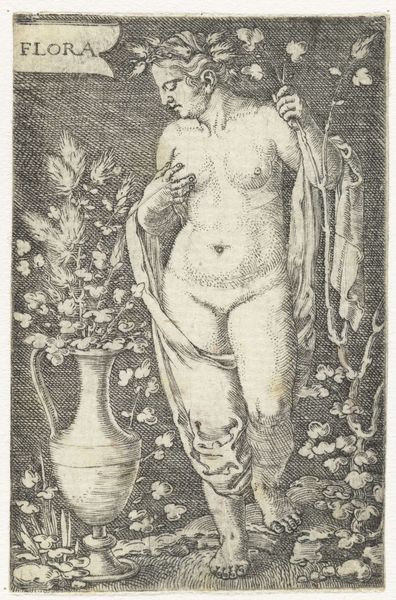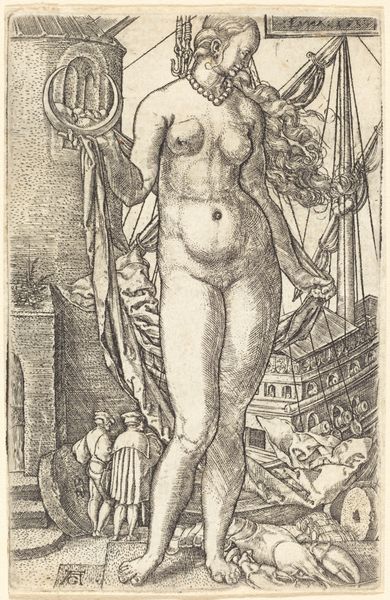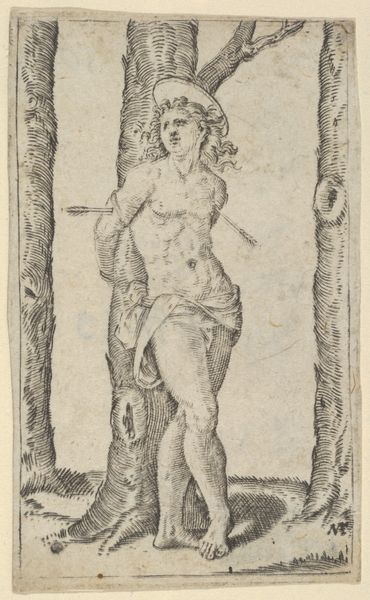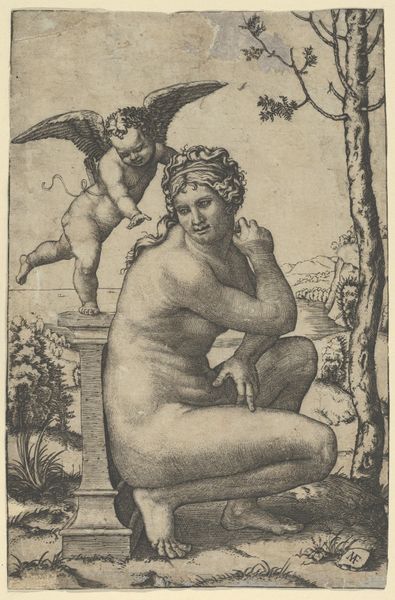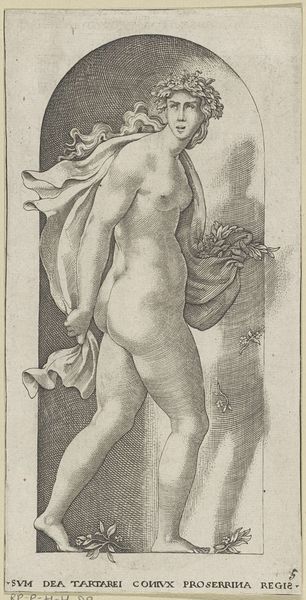
print, engraving
#
portrait
# print
#
figuration
#
line
#
history-painting
#
northern-renaissance
#
nude
#
engraving
Dimensions: sheet: 5.9 × 4.1 cm (2 5/16 × 1 5/8 in.)
Copyright: National Gallery of Art: CC0 1.0
Curator: Let’s take a look at Barthel Beham’s “Cleopatra,” an engraving dating back to 1524. My first impression? Stark. The linework is so precise; it gives the whole piece a kind of intense stillness. Editor: It does have a certain haunting quality. And look at the way Beham employs line to suggest both form and texture—especially with the foliage and tree trunk. One almost forgets this is ink on paper. Considering this artwork, the socio-historical weight attached to depictions of Cleopatra through history is unavoidable, especially concerning themes of gender, power, and cultural perception. Curator: Absolutely. The printmaking process itself adds another layer. Engraving involves significant manual labor, each line carefully etched. How does that physical act influence the final product, and consequently, how we interpret this figure of Cleopatra? What’s really remarkable is that the materials used and labour invested contrast the typical portrayal of royalty that frequently is luxurious in artistic depiction, and a closer relationship between craft and art blurs boundaries here. Editor: I'm thinking of how representations of Cleopatra often fall into the trap of exoticism and sexual allure. It is imperative to explore to what extent Beham's depiction subverts or perpetuates those established visual stereotypes and reflect how the historical treatment of prominent female figures intersects with questions about identity and narrative control. In this, her gaze downward and the serpent clutched close speaks to themes of vulnerability, the complexity and consequences of a single act against empire. Curator: I see what you’re saying, but the precision of those lines creates a controlled sensuality. The cool detachment inherent in the medium tempers the potential for outright objectification, doesn’t it? What does the choice to print allow that, say, a painting doesn’t? Editor: And, in addition to the print’s capabilities, its reproduction would ensure access to imagery more broadly and have influence over perceptions during this moment in history. Beham positions Cleopatra as a figure caught between strength and fragility within larger discourses about female authority and agency. Curator: Ultimately, this engraving serves not only as a historical portrait but also as a potent meditation on mortality and power… Editor: …a striking visual articulation of identity, forcing us to reckon with the multifaceted nature of the iconic Cleopatra through the ages.
Comments
No comments
Be the first to comment and join the conversation on the ultimate creative platform.
